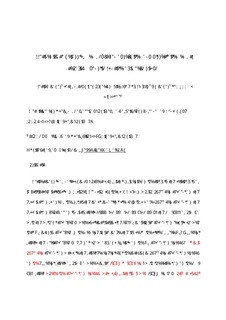| dc.contributor.author | Chen, Qingjun | |
| dc.contributor.author | Svenum, Ingeborg-Helene | |
| dc.contributor.author | Gavrilovic, Ljubisa | |
| dc.contributor.author | Chen, De | |
| dc.contributor.author | Blekkan, Edd Anders | |
| dc.date.accessioned | 2020-01-08T08:19:54Z | |
| dc.date.available | 2020-01-08T08:19:54Z | |
| dc.date.created | 2020-01-03T10:13:46Z | |
| dc.date.issued | 2019 | |
| dc.identifier.issn | 0039-6028 | |
| dc.identifier.uri | http://hdl.handle.net/11250/2635206 | |
| dc.description.abstract | Trace amounts of potassium (K) have a significant influence on the activity and selectivity of cobalt-based catalysts in Fischer–Tropsch synthesis (FTS), in which hydrogen adsorption and dissociation is one of the initial and most important steps. In this work, hydrogen adsorption and dissociation behavior on typical facets ((0001), (10–11), (10–12), (10–15) and (11–20)) of hcp Co with and without adsorbed K were systematically studied. H2 molecular adsorption results showed that H2 mainly adsorbed in the perpendicular mode and close to the state of free H2. Different facets and pre-adsorbed K did not show obvious effects on the H2 adsorption energy. Atomic hydrogen adsorption was site and facet dependent, but the maximum hydrogen adsorption energy on the different facets of hcp Co were similar (-2.64 to -2.67 eV) with the exception on the (11–20) facet where the adsorption energy was significantly lower (-2.44 eV). K had a slight destabilizing effect on the H atom adsorption on the former Co surfaces due to a very weak repulsive interaction between K and H atoms. The initial H2 dissociation had negligible energy barriers (0–0.07 eV) on the clean surface of hcp Co, suggesting the direct dissociative adsorption of H2. The energy barriers for H2 dissociation are mainly caused by the approach of molecular H2 towards the Co surface and the rotation of the H2 molecule from the perpendicular mode to the parallel mode. The H2 dissociation energy barriers increase by 0.02–0.17 eV after the pre-adsorption of K, indicating a slight inhibition of H2 dissociation by K. However, the energy barriers for H2 dissociation in the presence of K were also small (0.05–0.21 eV). This indicates that H2 dissociates readily at typical Co-based FTS reaction temperatures (210–240 °C), both in the absence and presence of K. Different K species (K and KOH) exhibit similar effects on H2 dissociation on hcp Co. The B5 sites on the stepped facets, the preferred sites for K adsorption are not the most favorable site for H2 dissociation, and K slightly hinders H2 dissociation at the B5 site of hcp Co. | nb_NO |
| dc.language.iso | eng | nb_NO |
| dc.publisher | Elsevier | nb_NO |
| dc.rights | Attribution-NonCommercial-NoDerivatives 4.0 Internasjonal | * |
| dc.rights.uri | http://creativecommons.org/licenses/by-nc-nd/4.0/deed.no | * |
| dc.title | Effect of trace potassium on hydrogen adsorption and dissociation on hcp cobalt: A density functional theory study | nb_NO |
| dc.type | Journal article | nb_NO |
| dc.type | Peer reviewed | nb_NO |
| dc.description.version | acceptedVersion | nb_NO |
| dc.source.journal | Surface Science | nb_NO |
| dc.identifier.doi | 10.1016/j.susc.2018.11.001 | |
| dc.identifier.cristin | 1765648 | |
| dc.description.localcode | © 2018. This is the authors’ accepted and refereed manuscript to the article. Locked until 3.11.2020 due to copyright restrictions. This manuscript version is made available under the CC-BY-NC-ND 4.0 license http://creativecommons.org/licenses/by-nc-nd/4.0/ | nb_NO |
| cristin.unitcode | 194,66,30,0 | |
| cristin.unitname | Institutt for kjemisk prosessteknologi | |
| cristin.ispublished | true | |
| cristin.qualitycode | 1 | |

